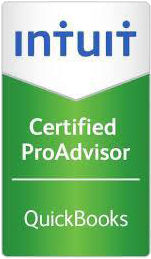Many businesses use independent contractors to help keep their costs down and provide flexibility for short-term needs. But the question of whether a worker is an employee or an independent contractor is complex. Be careful that your independent contractors are properly classified for federal tax and employment tax purposes, because if the IRS reclassifies them as employees, it can be an expensive mistake.
Differing Obligations
If a worker is an employee, your company must withhold federal income tax and the employee’s share of Social Security and Medicare taxes, pay the employer’s share of Social Security and Medicare taxes, and pay federal unemployment tax. State tax obligations may also apply. A business generally must also provide that worker with fringe benefits if it makes them available to other employees.
However, if a worker is an independent contractor, these obligations don’t apply. In that case, the business simply sends the contractor a Form 1099-NEC for the year showing the amount paid (if it’s $600 or more). The contractor is responsible for paying self-employment tax and, generally, making estimated tax payments for income tax purposes in relation to the amount paid.
Key Factors
Who’s an “employee?” Unfortunately, there’s no one definition of the term. The IRS and courts have generally ruled that one of the key factors that determines the difference between an employee and a contractor is the right to control and direct the person in the jobs they’re performing, even if that control isn’t exercised. The issue of control is evaluated by asking several questions, including:
- Who sets the worker’s schedule?
- Are the worker’s activities subject to supervision?
- Is the work technical in nature?
- Is the worker free to work for others?
Another important factor is whether the worker has the opportunity for profit or loss based on his or her managerial skills. That is, can the worker apply independent judgment and business acumen to affect the success or failure of the work being performed? If there’s a lack of such opportunity, that’s one indication of employee status.
Some employers that have misclassified workers as independent contractors may get some relief from employment tax liabilities under Section 530. This protection generally applies only if an employer meets certain requirements. For example, the employer must file all federal returns consistent with its treatment of a worker as a contractor and it must treat all similarly situated workers as contractors. Be aware, Section 530 doesn’t apply to certain types of workers.
Think Carefully Before Asking the IRS
You can ask the IRS (on Form SS-8) to rule on whether a worker is an independent contractor or employee. However, you should also be aware that the IRS has a history of classifying workers as employees rather than independent contractors.
So, before you file Form SS-8, contact the office for a consultation. Filing this form may alert the IRS that your business has worker classification issues, and it may unintentionally trigger an employment tax audit. It may be better to properly set up a relationship with workers to treat them as independent contractors so that your business complies with the tax rules.
Workers who want an official determination of their status can also file Form SS-8. Dissatisfied workers you’ve treated as independent contractors may do so because they feel entitled to employee benefits and want to eliminate their self-employment tax liabilities. If a worker files Form SS-8, the IRS will notify the business with a letter that identifies the worker and includes a blank Form SS-8. The business will be asked to complete and return the form to the IRS, which will render a classification decision.
Need More Help?
Worker classification is complex. In addition to what’s been discussed here, there are differing rules that apply for labor law purposes, which can impact minimum wage and overtime pay requirements.




